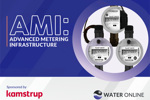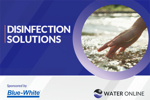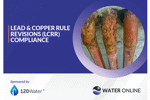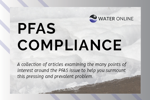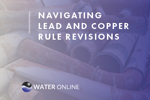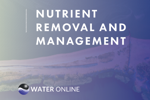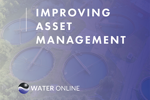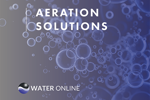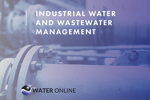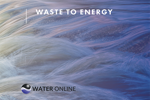WATER ONLINE CONTENT COLLECTIONS: EBOOKS
Exclusively for subscribers of Water Online, our content collections bundle articles centered around a particular topic or theme. These carefully curated selections feature content from both our internal team of editors as well as our subject matter experts who contribute regularly to the site.
-
AMI: Advanced Metering Infrastructure
This advanced metering infrastructure e-book explores these topics and more, illustrating how the benefits of AMI extend well beyond billing. From leak detection and demand management to enhanced customer service and improved operational performance, AMI offers transformative potential for the modern utility.
-
Disinfection Solutions
Whether for drinking water, wastewater, reuse, or industrial water, disinfection is a key component of treatment, but results will vary. Much is dependent on proper application according to conditions, as well as utilizing the correct disinfectant and equipment. These factors will all impact your operation’s bottom line; but more importantly, poorly executed disinfection will put water quality, regulatory compliance, and human safety at risk.
-
Lead & Copper Rule Revisions (LCRR) Compliance
Discover the EPA’s Lead and Copper Rule Improvements, understand challenges for small communities, and explore the role of digital transformation in managing evolving regulations.
-
PFAS Compliance
With the federal government having proposed numeric standards for per- and polyfluoroalkyl substances (PFAS) in drinking water, municipalities will soon be on the clock for monitoring and treatment requirements. The contaminants, which were once used in industrial operations and as an element in firefighting foam, have found their way into source water throughout the country. Understanding the scope of the problem and the potential treatment options is the key for water utility managers to be in the best position to maintain compliance.
-
Navigating Lead And Copper Rule Revisions
The Lead and Copper Rule (LCR) existed before the years-long contamination crisis that began in Flint, Michigan in 2014, but the attention brought forth by that scandal made lead poisoning a national issue. While Flint's problems revolved around a change in the water source and leaching from water mains, the more common source of lead in drinking water stems from lead service lines delivering water from public water mains to the tap, often on private property.
-
Nutrient Removal And Management
Nutrient pollution, triggered by excess nitrogen and phosphorus present in waterways, is one of America’s most widespread, costly, and challenging environmental problems. Although water resource recovery facilities (WRRFs) are not the primary culprit — pollution can occur due to land development, agriculture, aquaculture, and stormwater runoff — nutrient discharges from wastewater systems are being restricted at an increasing rate. The regulatory incentive is to reduce the formation of harmful algal blooms (HABs), which are a source of toxic cyanobacteria that can harm humans and animals in recreational waters and can also make its way into drinking water. The articles in this e-book provide insight into the worsening problem as well as cost-effective strategies to deal with it.
-
Improving Asset Management
All utility assets, including sewer pipes, distribution lines, treatment equipment, and the plant itself, are on the clock. As time goes by, their efficacy (and thus usefulness) wanes, eventually reaching the point of replacement. Until then, we want to get the most out of our assets, balancing performance with the cost to repair or replace. Keys to striking this balance are condition assessment, O&M procedures (predictive maintenance vs. time-based preventive maintenance vs. reactive maintenance), and the optimization and protection of existing assets.
-
Aeration Solutions
Aeration — the process of introducing air to a liquid or substance — is especially important and common for municipal wastewater treatment, but is also used within drinking water treatment and for cleaning up environmental waters, so it is a cornerstone technology for water-management professionals to understand and even master. Proficiency is key because aeration is typically energy-intensive and thus expensive; however, recent technology advances and alternative approaches are bringing cost savings to operations. From identifying the right fit for your application to running it efficiently, proper insight into aeration principles, performance variables, and technology trends can have an outsized impact on your treatment efficacy and bottom line.
-
Industrial Water And Wastewater Management
Industrial water and wastewater managers are under just as much pressure to lower costs and demonstrate sustainability as much as their municipal counterparts. While many companies are aware of the need to change the way they use water to be sustainable, as well as future-proof their operations, they often run into trouble integrating it into their business planning and processes. The good news is that a variety of resources are available — including improved quality and flow accuracy, deeper situational awareness, and reuse schemes — to industrial water and wastewater treatment managers.
-
Waste To Energy
Wastewater treatment facilities often encounter a significant opportunity to demonstrate environmental responsibility while cutting costs and/or generating income by converting waste to energy. However, in some cases the practice isn’t as widespread as it could be because the readings required to optimize the process often clash with the misconception that biogas is messy and difficult to measure reliably. In other operations, when anaerobic digestion is improved, it can function as a net energy provider, generating biogas that can be further processed into electricity.
-
Pump System Solutions
Pump systems play a critical role in water and wastewater operations, but opportunities to improve their reliability and efficiency are overlooked. That can happen when designers or engineers fail to consider new demands placed on the system since installation or understand the benefits of available options. Often, the most significant opportunities missed stem from neglecting to see the big picture savings and efficiencies to be gained.
-
Advanced Metering Infrastructure
While the U.S. water industry is investing billions of dollars in advanced metering infrastructure (AMI), some utility executives still have lots of questions. Is it worth the investment? Where will the ROI come from? How can I minimize the risks? Is my organization ready to make this transition?
-
Utility And Infrastructure Resiliency
The ability to operate seamlessly in the face of challenges — which includes everything from increased demands and changing regulations to environmental factors and extreme events — is the core of resiliency. In 2020, the pandemic has brought the need for water systems to bolster their resiliency to the forefront.
-
Per- And Polyfluoroalkyl Substances (PFAS)
With states and the federal government edging closer toward PFAS regulations, it’s only a matter of time before municipalities will be required to address the contaminant. As the rules evolve, PFAS promises to be a moving target for a long time.
-
Digitalization Of The Water Industry
Global water challenges — such as affordability, scarcity, resilience, and quality — are putting more pressure than ever on utility managers and the communities they serve.
-
Reducing Non-Revenue Water
Most utilities know they have a significant non-revenue water problem — with the typical system bleeding an average of 24 percent annually — but few have the expertise and technology to address it properly. While the concept of water loss in the distribution network isn’t new, water scarcity and the difficulty of raising rates as an offset means non-revenue water (NRW) is no longer tolerable.
-
Effective Stormwater Management
Approaches to stormwater have improved dramatically. This free collection of articles provides detailed examples of successful and sustainable solutions that water and wastewater quality managers may be able to adopt to address their own stormwater dilemma.

